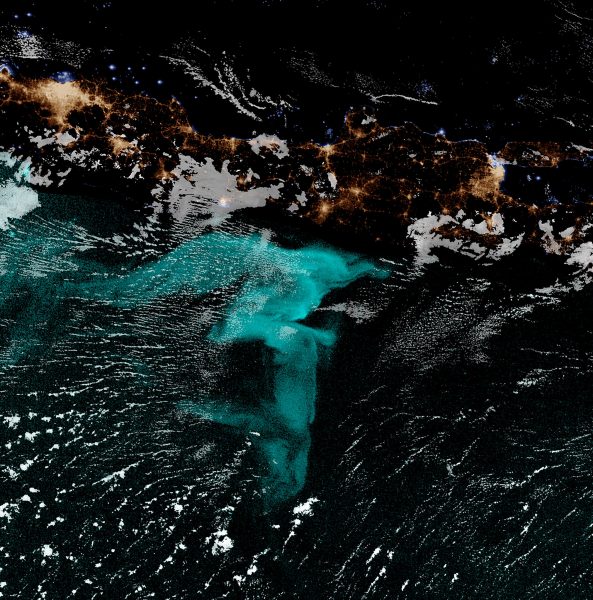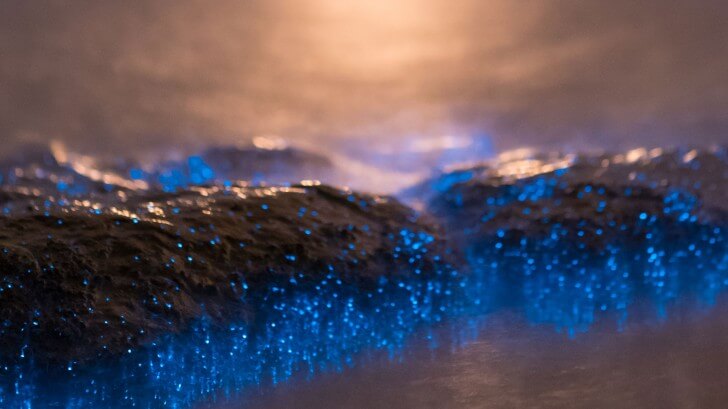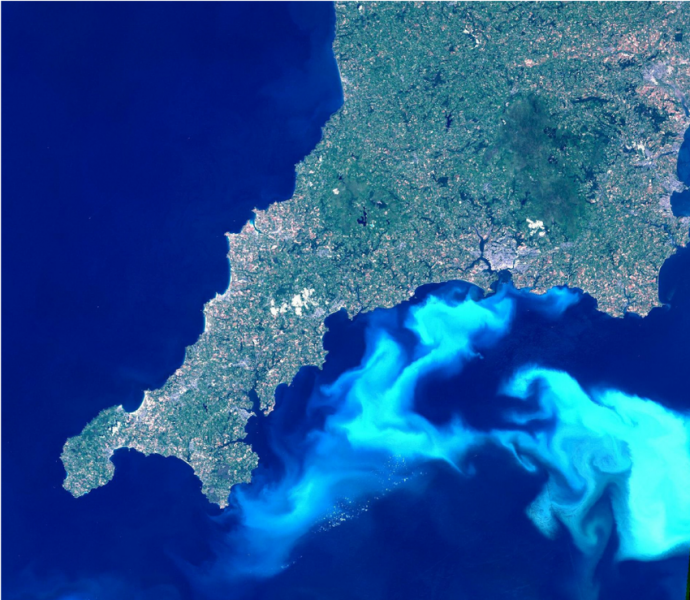
Corresponding Through Satellites and Milky Seas
In January 2019, Dr. Steven Miller — a senior research scientist at Colorado State University — wrote to Latitude with an inquiry: Had anyone ever seen or experienced “Milky Seas,” a rare phenomenon where the entire ocean appears to glow? (This is not to be confused with bioluminescence.)
In March, Murat Albayrak, who resides in Istanbul, Turkey, responded to Miller. “My father is [a] retired captain and this ‘milky sea’ has been part of our family folklore for a long time.” Murat recalled a trip in the early 1970s off the east coast of Africa when “the sea was milky white as far as the eye could see.”
Miller, who is a specialist in satellite observations, has gone on to publish a report that observed a type of ocean bioluminescence “so intense and massive in scale that satellites orbiting five hundred miles high can see glowing mats of microorganisms as they materialize in the seas,” the New York Times reported on Friday. “Last month in the journal Scientific Reports eight investigators told of finding a luminous patch south of Java in 2019 that grew to be larger than the combined areas of Vermont, New Hampshire, Massachusetts, Rhode Island and Connecticut.”

“Scientists are so far at a loss to explain the phenomenon.”
The Times said that the recent study “noted that the large concentrations of living lights have long ‘eluded rigorous scientific inquiry, and thus little is known about their composition, formation mechanism, and role within the marine ecosystem.'”
Honing in on a theory, scientists have theorized that certain suspensions of a particular type of bacteria would not emit a gleam, but if those bacteria multiplied, the microbes could light up “as if a switch were thrown,” the Time reported. “Scientists now theorize that the glittering masses of bacteria lure fish, whose guts provide nourishing habitats.” (Miller, who was quoted in the 2011 Latitude article, was at the time skeptical of the bacteria theory, saying an extremely high concentration of bacteria must exist before they begin to produce light.)

Here are the original letters exchanged between Steven Miller and Murat Albayrak.
⇑⇓ CITIZEN SCIENTISTS WANTED
I am reaching out with hopes that somehow your seafaring readership can help with some interesting marine research. My name is Steven Miller, and I am a research scientist at Colorado State University. Part of my research involves using satellites to detect marine bioluminescence. In particular, we are searching for ‘milky seas’, which are vast expanses of glowing water. We had a satellite-confirmed sighting in 1995, off the coast of Somalia.
Earlier this year, we think we spotted another one. We are trying desperately to get in touch with the crew of merchant ships that crossed these waters, based on www.MarineTraffic.com data, but so far we haven’t had much luck. Every once in a while I’ll be contacted by a private sailor who has reported traversing a milky sea. My sense is that there may be some in the Latitude 38 community who have as well.
The first milky-sea findings generated world news-level excitement. We are hoping that the new satellites we have will be able to detect them. If any of your readership are connected to the commercial shipping community, perhaps that would help us get in touch with the crews who were crossing the area of interest back in January 2018 — we have the names of the ships.
Steven Miller
January, 2019

⇑⇓ MILKY SEAS REDUX
Dear Steven,
I have seen your letter on the Latitude 38. My father is retired captain and this ‘milky sea’ has been part of our family folklore for a long time. My father was the captain on a ship sailing from Israel to South Africa down the east coast of Africa at that time and my mother was accompanying him. When they neared the equator my mother asked my father to alert her when they crossed it and my father joked “as if they were going to mark it for you in white”.
The same evening my mother saw my father rushing down from the bridge into their cabin, flipping excitedly through various books and asked if something was wrong. My father simply said “look through the porthole”. When she peered outside the sea was milky white as far as the eye could see. There was no moon to confuse what they saw. They were sailing in a sea of milk. They took samples from the sea to see if it was a bioluminescence of some sort and if the water in the bucket would also be the same color. It was quite the same ordinary old sea when in the bucket. This situation lasted until the morning and they never experienced it again.
My father was concerned that it was a volcanic event that could have put the ship in jeopardy and researched it. He found similar events mentioned but there was no clear explanation for it.
If you need details of the trip and the ship they were on I am sure him or my mother would be able to provide them since they are in good health and still remember the incidence quite clearly. My father’s name is Kazim Akbayrak, and he was working for OFFER Brothers at that time. I think it was early ’70s. If you could come up with an explanation for this event I would appreciate it if you could let us know as well. This has been one of life’s mysteries for us.
Murat Albayrak
March, 2019
